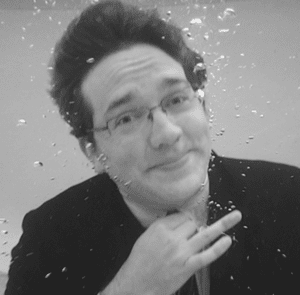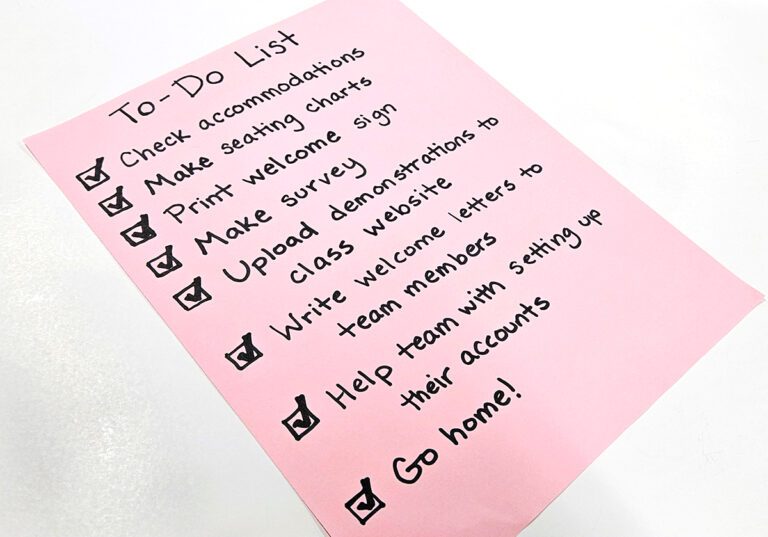Ah, student teaching. It can be dreamy with phenomenal cooperating teachers, wonderful students, and great school placements. Or, it can be an utter nightmare. If you’ve been through student teaching, you know that both positive and negative experiences can shape your teaching practice. However, if you think about it, did any of your experiences truly prepare you for taking over your own classroom?
If you felt underprepared, you’re not alone. Many first-time teachers do. Dr. Stephanie Baer, an Art Education professor at Miami University in Oxford, Ohio, wants to change that. She’s done extensive work and research in helping students find teaching jobs. Her goal is to find a balance between theory and practice so her students can have the best student teaching experiences possible.
She’s done extensive work and research in helping students find teaching jobs. Her goal is to find a balance between theory and practice so her students can have the best student teaching experiences possible.
Through her work, she’s seen some areas that she thinks could drastically improve. Let’s take a look.
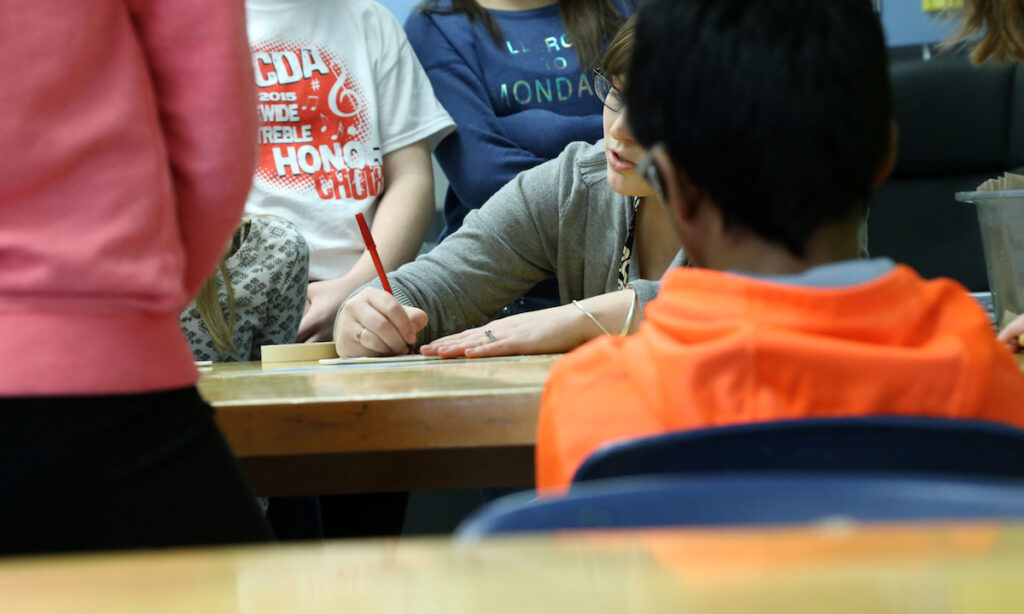
Student Teachers Need Help Figuring Out Their Teaching Identity
One of the most difficult things about being a teacher is becoming comfortable in your own skin. Though we focus on what happens in the classroom, it goes beyond art skills and pedagogy. Dr. Baer teaches a course called Professional Dispositions in Art Education where students focus on developing the professional side of their teaching identity. “We work on professional issues like resume/philosophy writing, interviewing skills, understanding a school hierarchy, public speaking, and building confidence.”
Administrators want to see that potential candidates are a good fit for their school, and they can’t do that if people don’t put themselves out there. Dr. Baer tells her students, “Be brave. Be bold. Know who you are and what you have to offer.” She says effective teaching is as individual as the teacher, and she hopes that her students realize this sooner rather than later. “They need to recognize that just because it works for another teacher, doesn’t mean it can be carbon-copied to their own space.”
Student Teachers Should Develop Their Individual Passions
Part of developing a teaching identity is developing a passion for teaching. Dr. Baer puts it like this: “There need to be opportunities for the preservice students to STAND UP and advocate for the arts – to research what they’re passionate about within the discipline and practice what their message is about it. It’s so important for them to be able to, literally, stand up and clearly discuss what they believe about teaching art and why. They’re becoming powerful advocates for their passion, and they should feel good about the choice they’ve made to become an art teacher.”
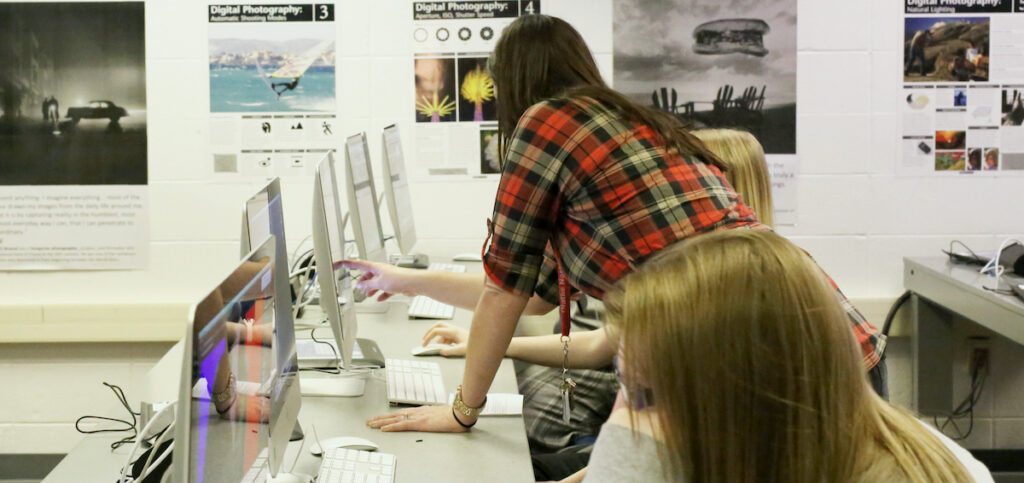
Cooperating Teachers Need to Model Positivity
Cooperating teachers need to be beacons of positivity for perspective teachers. The job entails showing what teaching art is all about and how to do it well. Unfortunately, it’s easy for cooperating teachers to complain about all the negative aspects of the job like behavior issues, mountains of paperwork, and tricky schedules. Baer says, “Education is tough, and teaching well is so incredibly difficult in the current climate. But that doesn’t need to be harped on. Share your passion for your job and your students.”
Cooperating teachers need to be responsive to all the questions student teachers will have. “When they are in your classrooms, be a model,” Baer says. “Recognize that students are often coming from an idealistic place and are slowly learning the logistics and practicalities of what it means to be an art teacher. It does no one any good to gripe/gossip about colleagues, administration, or students.”
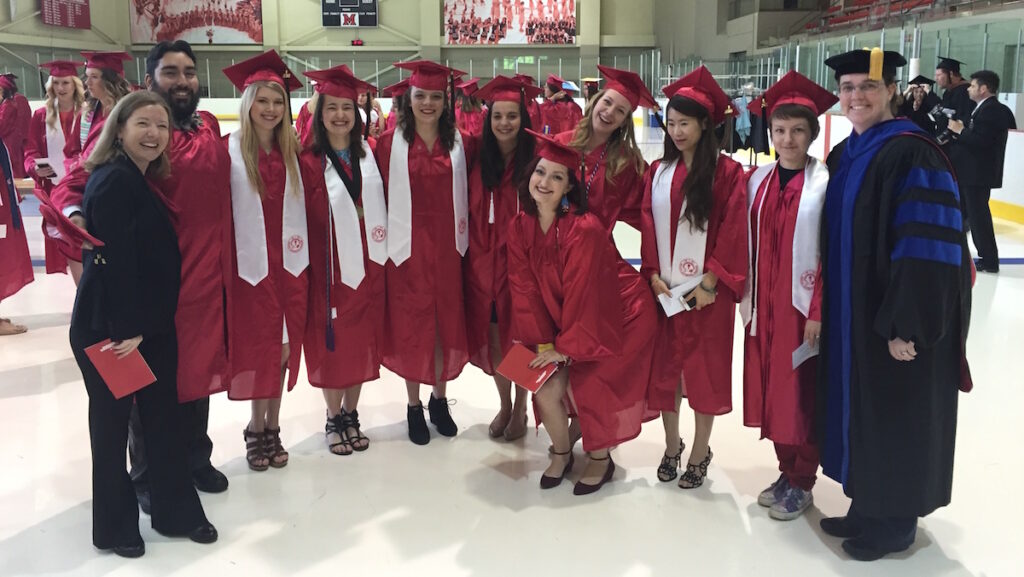
Universities Should Ask More of Classroom Teachers
Dr. Baer believes that colleges and universities need to rely more on the expertise of cooperating teachers saying, “I think teacher education programs could do a better job of partnering with practicing teachers – beyond having their students show up for observation hours. There needs to be a thread of practicality running through their own art education programs. There also needs to be an open line of communication between the cooperating teacher and the university supervisor – we’re here to support everyone, and we can’t do that if there’s no communication. It’s critical to get students thinking about the realities of a classroom setting as well as real situations they might be faced with. That way, there are fewer surprises when they have their own classroom.”
Preservice teachers can’t just sit back and watch. They need to be an active part of what’s happening in the teaching world. The best place to learn is in real-world classrooms, and universities can do a better job of getting their students in those situations and then provide time to debrief and deconstruct what they’ve seen when back on campus.
When it comes down to it, the things student teachers need are few, but important: identity, confidence, passion, and experience. When cooperating teachers and universities work together, student teachers can be sent out into the teaching force with the tools they need to run a classroom well and the right attitude to be a positive change-maker.
If you’re looking for even more ideas to make the student teaching experience meaningful, join Johanna Russell at the AOE Summer Art Ed Now 2016 Conference. Johanna will be sharing tips about having a successful mentoring experience no matter if you’re the mentor or the mentee. Walk away with tips to make the experience meaningful!
How was your student teaching experience?
What was the best part? What do you wish had been done differently?
Magazine articles and podcasts are opinions of professional education contributors and do not necessarily represent the position of the Art of Education University (AOEU) or its academic offerings. Contributors use terms in the way they are most often talked about in the scope of their educational experiences.

